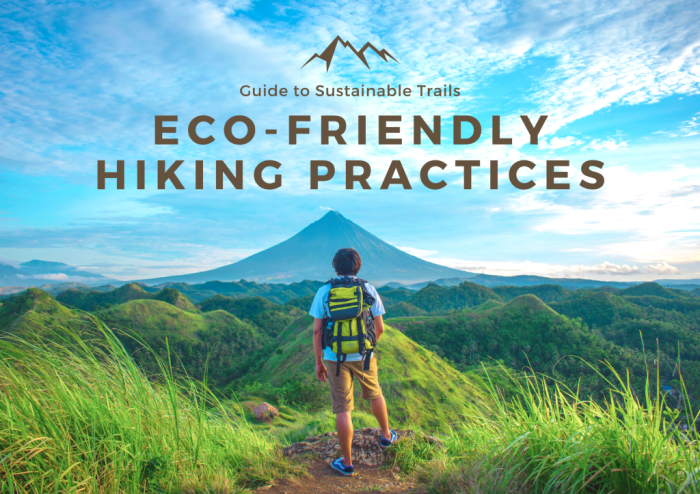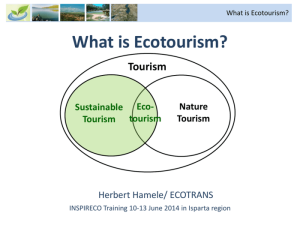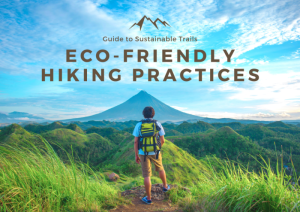
Embark on a journey with Eco-Friendly Hiking and Trekking Tours, where nature meets sustainability in a harmonious blend. Discover the beauty of our planet while treading lightly on its delicate ecosystems.
Introduction to Eco-Friendly Hiking and Trekking Tours

Eco-friendly hiking and trekking tours are outdoor adventures that prioritize minimizing negative impacts on the environment while promoting sustainable practices. These tours aim to preserve the natural beauty of the landscapes visited and contribute to the conservation of flora and fauna.
Embarking on eco-friendly tours not only allows participants to enjoy the beauty of nature but also helps in preserving these natural habitats for future generations. By following Leave No Trace principles and supporting local conservation efforts, eco-friendly tours play a crucial role in promoting responsible tourism.
Benefits of Eco-Friendly Tours for the Environment
- Reduction of carbon footprint by minimizing transportation impact through carpooling or using eco-friendly transportation options.
- Promotion of sustainable practices like waste reduction, recycling, and energy conservation during tours.
- Support for local conservation initiatives and wildlife protection efforts in the areas visited.
- Preservation of natural habitats and ecosystems by following designated trails and respecting wildlife.
Popular Eco-Friendly Hiking and Trekking Destinations Worldwide
- Patagonia, Chile and Argentina: Known for its stunning landscapes, diverse wildlife, and commitment to conservation efforts.
- Swiss Alps, Switzerland: Offers well-maintained trails, eco-friendly accommodations, and stunning mountain views.
- Costa Rica: A biodiversity hotspot with numerous eco-friendly hiking and trekking options in lush rainforests and national parks.
- Mount Kilimanjaro, Tanzania: Africa’s highest peak with eco-conscious tour operators focusing on sustainability and responsible tourism.
Principles of Eco-Tourism
Ecotourism is a form of responsible travel to natural areas that conserves the environment, sustains the well-being of the local people, and involves interpretation and education. The key principles of ecotourism include minimizing impact, building environmental and cultural awareness and respect, providing positive experiences for both visitors and hosts, and providing direct financial benefits for conservation.
Promoting Sustainability and Biodiversity Conservation
- Minimizing environmental impact through responsible travel practices such as staying on designated trails, carrying out waste, and respecting wildlife.
- Supporting local communities by hiring local guides, staying in locally-owned accommodations, and purchasing locally-made products.
- Contributing to conservation efforts by funding projects that protect natural habitats and wildlife species.
Successful Ecotourism Projects in Hiking and Trekking
- The Inca Trail in Peru: Managed by the National Institute of Culture, this iconic trek to Machu Picchu generates revenue for conservation and supports local communities.
- The Milford Track in New Zealand: This famous hiking trail is carefully managed to protect the surrounding Fiordland National Park and provide educational opportunities for visitors.
- The Appalachian Trail in the United States: Volunteers and organizations work together to maintain this long-distance trail while promoting sustainable practices and environmental awareness.
Eco-Friendly Practices in Hiking and Trekking

When engaging in hiking and trekking tours, it is crucial to adopt eco-friendly practices to minimize our impact on the environment and preserve the natural beauty of the surroundings. By following Leave No Trace principles and implementing simple tips, hikers and trekkers can contribute to sustainable tourism and conservation efforts.
Leave No Trace Principles and Application
The Leave No Trace principles serve as a guideline for minimizing environmental impact while enjoying the great outdoors. These principles include:
- Plan ahead and prepare: Research the area you will be hiking in, bring appropriate gear, and be aware of regulations and guidelines.
- Travel and camp on durable surfaces: Stick to designated trails to avoid trampling vegetation and causing erosion.
- Dispose of waste properly: Pack out all trash, including food scraps and biodegradable items. Leave nature as you found it.
- Leave what you find: Avoid picking flowers, disturbing wildlife, or removing rocks and plants from their natural habitat.
- Respect wildlife: Observe animals from a distance, avoid feeding them, and do not disturb their habitats.
- Minimize campfire impacts: Use a camp stove for cooking instead of building fires, and follow guidelines for fire safety.
- Be considerate of other visitors: Respect fellow hikers and maintain a peaceful and harmonious atmosphere on the trails.
Tips for Reducing Environmental Impact
Aside from following the Leave No Trace principles, hikers and trekkers can take additional steps to reduce their environmental impact:
- Use reusable water bottles and containers to minimize waste from single-use plastics.
- Stay on designated trails to protect fragile ecosystems and prevent soil erosion.
- Avoid using loud, disruptive noises that can disturb wildlife and other hikers.
- Carry a small bag to collect any trash you come across on the trail, even if it is not your own.
- Choose eco-friendly hiking gear made from sustainable materials and manufactured using environmentally friendly processes.
- Support local conservation efforts by donating to organizations that work to preserve natural habitats and wildlife.
Eco-Friendly Gear and Equipment
When embarking on eco-friendly hiking and trekking tours, it is essential to equip yourself with gear that supports sustainable practices and minimizes environmental impact.
Essential Eco-Friendly Gear
- Reusable water bottles made from stainless steel or BPA-free plastic to reduce single-use plastic waste.
- Solar-powered chargers for electronic devices to rely on renewable energy sources while on the trail.
- Biodegradable or compostable toiletries to avoid leaving harmful residues in natural habitats.
- Organic and sustainable clothing made from materials like hemp, bamboo, or recycled fibers to lessen the carbon footprint of your wardrobe.
Comparison with Traditional Gear
Traditional hiking gear often relies on synthetic materials and non-renewable resources, contributing to pollution and resource depletion. In contrast, eco-friendly alternatives prioritize sustainability, durability, and minimal environmental impact.
Importance of Sustainable Materials
Using sustainable materials in outdoor gear manufacturing is crucial for reducing the ecological footprint of hiking and trekking activities. By opting for gear made from recycled, biodegradable, or renewable materials, outdoor enthusiasts can support a more eco-conscious approach to exploring nature.
As we conclude our exploration of Eco-Friendly Hiking and Trekking Tours, let’s remember the importance of preserving our environment for future generations. Embrace the call of the wild while leaving only footprints behind, ensuring a greener tomorrow for all.
FAQ Insights
What are some eco-friendly practices hikers can adopt?
Some eco-friendly practices include staying on designated trails, properly disposing of waste, and minimizing noise pollution.
How can eco-friendly gear benefit the environment?
Eco-friendly gear reduces the use of harmful chemicals and materials, promoting sustainable manufacturing processes.
Why is biodiversity conservation important in ecotourism?
Biodiversity conservation ensures the protection of various species and ecosystems, maintaining the balance of nature.





